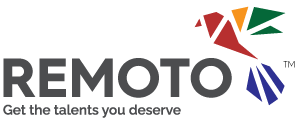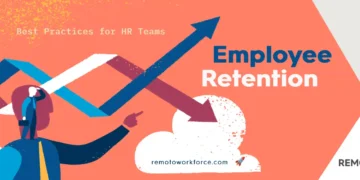The remote revolution has reshaped how businesses operate, hire, and grow. With offices no longer the main place to work together, leadership depends on clarity, consistency, and connection. This change has pushed organizations to rethink how they manage performance, support culture, and maintain progress.
Initially, many leaders tried to replicate office dynamics online. Scheduled video calls replaced hallway conversations, and cloud tools replaced paper-based processes. However, the biggest challenge wasn’t technological. It was relational.
Without face-to-face contact, leadership had to move from being present to being purposeful. The emphasis shifted to solving problems and enabling results rather than just managing activity.
Remote leadership requires both structure and flexibility. Leaders must align distributed talent while respecting diverse work styles, time zones, and cultural contexts. Success in this setting depends on a thoughtful approach that connects people across locations to shared objectives.
In this blog post, we explore everything you need to know about how to lead remote teams.
Clarity Beats Proximity: Set Expectations Early
Strong remote leadership starts with setting expectations that are clear and specific. Team members should never be left guessing what success looks like or who owns what. The absence of a shared physical space tends to amplify confusion.
That confusion can slow progress and weaken accountability. The best solution is to communicate with precision and purpose.
Define roles and responsibilities in writing. Avoid relying on assumptions or vague job descriptions. Instead, develop documentation and workflows that are easy to reference. Clarity helps people work independently and confidently, whether it’s a project outline or a shared team charter.
In addition to responsibilities, be clear on how performance will be measured. Metrics should be discussed early and revisited often. When teams understand how their contributions are evaluated, they stay aligned with goals and take more ownership of their outcomes.
Trust Is the New Currency
Micromanagement slows down remote teams and damages morale. Leaders who succeed remotely focus on building trust rather than controlling tasks. Trust enables creativity, accountability, and speed. When people feel trusted, they take more initiative and produce stronger results.
Trust does not mean lowering standards. In fact, high-trust teams often outperform traditional ones because expectations are paired with autonomy. Leaders can foster this by giving people space to choose how they work while still setting clear timelines and goals.
Consistency builds trust over time. Share updates frequently. Be transparent when changes occur. Invite questions and feedback. A leadership style built on openness encourages honesty, loyalty, and shared responsibility. Trust deepens when communication is reliable and respectful.
Communication Needs a System, Not Just Tools
Remote work has made communication more complex. Tools alone cannot guarantee effective interaction. What teams need is a structured system that combines real-time and asynchronous communication in a balanced and predictable rhythm.
Start by clarifying which tools serve which purpose. Reserve live meetings for decisions that require dialogue and strategic alignment. Use shared documents and dashboards for updates and ongoing projects. Establish guidelines on how often updates are posted and where questions should go.
In addition to structure, leaders must pay attention to tone. Messages sent digitally carry no body language. That makes it even more important to choose words thoughtfully. Lead with appreciation, stay concise, and aim to be clear without being abrupt. Strong written communication becomes one of the most valuable leadership skills in remote settings.
Culture Doesn’t Disappear. It Needs Attention
Company culture doesn’t vanish when people stop coming into the office. It just shifts location. In a remote environment, culture shows up in how people collaborate, how recognition is given, and how conflict is handled. Leaders who take ownership of culture can shape it deliberately.
One way to build culture remotely is by creating shared rituals. These can include weekly team wins, virtual coffee chats, or monthly retrospectives. These regular moments give the team something consistent to look forward to and a sense of belonging beyond the task list.
Hiring decisions also influence remote culture. Recruiting people who share your company’s values, communication style, and vision helps reinforce the culture you are working to build. When culture is designed intentionally, it supports productivity and morale across all locations.
Don’t Just Lead. Coach.
Remote teams respond best to leaders who coach rather than command. Coaching helps individuals grow and stay engaged. Instead of solving every issue, coaching leaders ask thoughtful questions and help people develop problem-solving skills they can use again.
The shift begins with check-ins. Ask about roadblocks, not just deadlines. Take time to understand how each person approaches their work. Offer context, tools, and encouragement. Coaching turns distance into a source of insight rather than isolation.
Feedback also becomes a key part of coaching. Make it regular and specific. Talk about progress, not just performance. Feedback should point toward development and reflect a commitment to helping people succeed. When done consistently, coaching strengthens trust and raises the standard of work.
Productivity Without Burnout
While remote work offers flexibility, it also blurs the line between work and rest. Leading a remote team means building habits and systems that support sustainable productivity and protect energy.
Encourage pacing instead of constant activity. Avoid praising people for being online at all hours. Support asynchronous work where possible, and normalize the need for breaks and offline time. Leaders who model healthy boundaries give their teams permission to do the same.
Promote focus during the workday. Help the team block time for deep work, reduce distractions, and prioritize essential tasks. Measure impact by outcomes rather than hours spent. Productivity grows when people have the freedom and space to do meaningful work without constant interruptions.
Hire for Fit and Autonomy
Strong remote leadership starts with thoughtful hiring. Skills and experience are important, but so are qualities like self-motivation, communication, and adaptability. Look for candidates who can succeed without needing close supervision every day.
Refine interview questions to reflect the demands of remote work. Ask how candidates manage uncertainty, handle feedback, and stay focused. The answers can help reveal who is ready for a remote-first environment and who may struggle without structure.
Once a person joins, onboarding becomes the next key moment. Create a clear path with milestones and resources. Provide introductions and context early. When new hires feel supported from day one, they begin contributing quickly and with confidence.
Align Vision with Action
Remote leadership calls for more than adjustments to logistics. It requires a complete mindset shift toward outcomes, communication, and connection. Distance no longer limits a team’s potential. What matters is how well a leader defines purpose, builds trust, and supports progress.
Distributed teams can accomplish remarkable results when led with clarity and care. Leadership from anywhere becomes effective when it centers on alignment, transparency, and human connection. Every conversation, process, and decision can either reinforce or weaken the team’s foundation.
Lead from anywhere by staying grounded in what matters most: people, clarity, and the ability to focus collective energy toward shared success.














